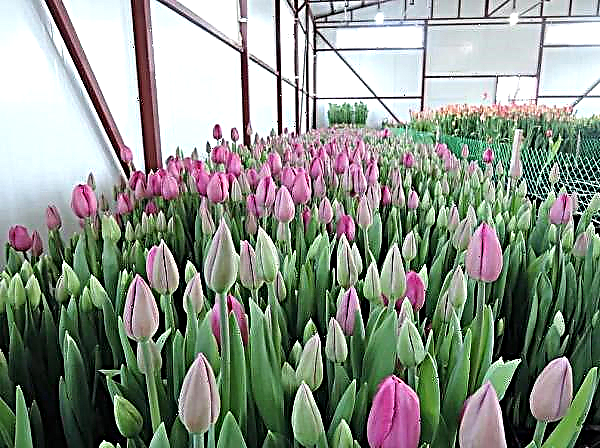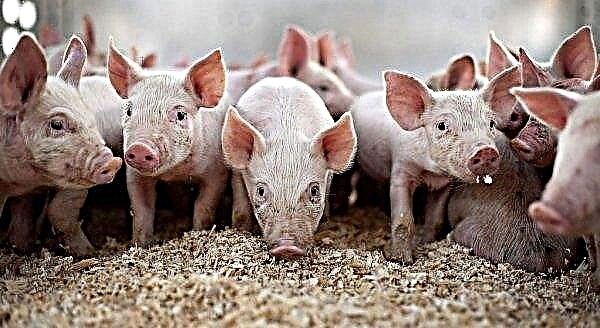The correct organization of the chicken coop will create optimal conditions for the productivity of laying hens. First of all, you need to take care of the perches on which the bird will sleep. You can learn about the function and varieties of perches, as well as how to construct them, from this article.
Why do we need perches in the chicken coop
All birds, regardless of their habitat, are driven by uniform instincts. Domestic chickens, like their free brethren, tend to climb higher in search of safety, despite the absence of potential predators. The inhabitants of the chicken coop need to create the most natural conditions.
To do this, the perch is intended to be a resting place for chickens, repeating the branches of trees with the height of the structure and the little perches. In addition, resting on a roost is more preferable than on bedding, for hygienic reasons: hens will not get dirty with products of their own vital activity, which is inevitable in the second case. Also, the risk of diseases of an infectious nature and from drafts is reduced.
In addition, resting on a roost is more preferable than on bedding, for hygienic reasons: hens will not get dirty with products of their own vital activity, which is inevitable in the second case. Also, the risk of diseases of an infectious nature and from drafts is reduced.
Design Options
Depending on the number and size of chickens, as well as on the dimensions of the premises, you should choose one of the perch options. The most popular are several types of designs.
Single-tier. This type is a wooden block with a rounded surface or with rectangular faces, supported by poles with grooves. This design prevents the slope of the perch during operation. One-tier structures are placed along the walls at a distance of 30 cm, so that the bird can freely climb and leave the roost. In order to avoid conflicts between individuals, it is recommended that such a length of the crossbar at which from 18 to 25 cm of support fall on each hen, depending on the breed. Such models are suitable for a small number of birds.
In order to avoid conflicts between individuals, it is recommended that such a length of the crossbar at which from 18 to 25 cm of support fall on each hen, depending on the breed. Such models are suitable for a small number of birds.
One of the advantages is that it’s easy to clean under them, and there is no need to equip the structure with a pallet.
Important! The single-tiered roost is often supplemented with a ladder so that the layers can easily climb on it. However, this harms the physical health of poultry, for which it is more beneficial to stay in relative comfort.
Layered. The best option for a small room. The multi-level design allows you to significantly save space. An important condition - the distance between the bars should be at least 50 cm, otherwise the chickens that have taken a place higher will dirty those sitting below the layers.
An important condition - the distance between the bars should be at least 50 cm, otherwise the chickens that have taken a place higher will dirty those sitting below the layers.
Did you know? Many-tier perches clearly demonstrate the hierarchical structure of relations between individuals. So, the upper ranks of the structure will be occupied by stronger birds, while the lower - the weakest and sickest.
Corner Designed for a small number of chickens (no more than two dozen goals). They are single- / multi-level structures of beams, the ends of which are fixed on the surface of adjacent walls. For hygienic reasons, the optimal distance between the crossbars is at least 50 cm. The relative lack of corner perches - under them it is inconvenient to maintain cleanliness. However, to avoid this problem, you can make the bars removable.
The relative lack of corner perches - under them it is inconvenient to maintain cleanliness. However, to avoid this problem, you can make the bars removable.
Lifting. The best option for organizing a small space. The design consists mainly of two supporting rungs with several rows of transverse bars. The degree of inclination varies due to the adjustable chain connected to the free edge of the structure.
This principle of its installation simplifies cleaning in the chicken coop.
Wearable. They are a table with a tray for litter, over which there are rows of single-level rungs. Such a perch is transportable, therefore, to maximize the use of this design, you need to choose a base table of such dimensions that will allow it to pass through the doorway. This is ideal for operation in a temporary location, where the livestock is, for example, in the summer.
This is ideal for operation in a temporary location, where the livestock is, for example, in the summer.
What should be perched for chickens
Product parameters vary depending on the breed of chickens. The optimal performance for each group is shown in the following table.
| Breed of chickens | Crossbar height from a floor (in cm) | Distance between crossbeams (in cm) | Crossbar diameter (in cm) | Bar length per chicken (in cm) |
| Young growth (up to 4 months) | 30–35 | 20–25 | 4–5 | 12–15 |
| Egg | 90 | 25–30 | 4–6 | 17–20 |
| Meat and egg | 60 | 30–35 | 5–7 | 25–30 |
At what height do and where to place in the chicken coop
Many owners are wondering where to place the perch, so that it becomes a place of good rest for living creatures. In natural conditions, birds climb overnight to high branches of trees to hide from a predator. Accordingly, at the level of instinct, hens will seek to find a place to sleep higher, the owner's task is to choose the design of the desired height. For each breed, it will be different. On average, this figure is from 60 cm to a meter. (For more information on the height of the bars for different breeds, see the table.)
Accordingly, at the level of instinct, hens will seek to find a place to sleep higher, the owner's task is to choose the design of the desired height. For each breed, it will be different. On average, this figure is from 60 cm to a meter. (For more information on the height of the bars for different breeds, see the table.)
The perch in the chicken coop should be installed in a secluded place so that the bird feels safe. It may become the darkened part of the room, away from windows and doors - thus the place of the overnight stay of the layers will be protected from bright light and drafts.
Did you know? Chickens carry eggs mainly in the daytime. The main condition is the presence of light, and its origin does not matter (artificial lighting can serve as an alternative to natural).
How to make do-it-yourself roosts for laying hens
Before proceeding to the production of perches, it is necessary to draw up a drawing of the chicken coop itself, indicating the dimensions for error-free calculation.
Example drawing of a chicken coop.
Tools and materials for manufacturing
Ready-made models of various types are available for sale, however, you can make a functional design yourself.
For this you will need:
- wooden bars;
- saw;
- hammer;
- plane;
- a set of nails;
- sandpaper.
This list of tools is enough to build a standard model. As the base material, birch, oak, aspen and other deciduous trees are used, since they have high strength and durability.
Manufacturing process
There is a single technique for building a perch.
The manufacturing process is reduced to the following steps:
- Wooden elements must be sawn in accordance with the desired parameters.
- With a knife or a planer, you should give the surface of the bars a rounded shape with a diameter optimal for your chicken breed (see table).
- Next, it is necessary to sand the bars for a comfortable and non-traumatic contact of the bird with the product during operation.
- Wood trimming can be used as a support with grooves of such a cross section that is 2 mm larger than the diameter of the bar. The latter must fit closely into the grooves, otherwise it will stagger, and it will be difficult for the chicken to maintain balance.
- It is necessary to fix the supports on the walls. If the surface of the walls is wooden, the supports are fixed with nails; if stone - through dowels and screws.
- After that, the processed bars should be inserted into the grooves, checking them for bending. If there is a likelihood of deformation, support should be installed in areas of increased risk.
- It is recommended that the pallet be made in accordance with perch parameters. Several bars are fixed from below along its perimeter. Further, a plywood or tin canvas spreads on the bars, which can not be mounted - this will facilitate the removal of litter. For the same purpose, it is better to leave 20 cm in front of the perimeter of the perch at the stage of manufacturing the pallet. The sides of the structure can reach 8 cm in height: this will prevent content from clogging in the pallet.
Before use, the pallet is filled with sawdust or shavings, adding fresh raw materials daily.
Important! If moisture or odor occurs, dry lime must be added to a new portion of the filler. The latter also acts as a disinfector: thus, cleaning the pallet will be reduced to once a week.
How to train a rooster chicken
The structure of the paws of the bird was originally designed for the circumference of the branch, so they are fixed in place when they sleep. The structure of the structure with the height of the arrangement and the diameter of the stems should imitate the situation from the natural environment so that the bird feels safe and fully relaxed. Despite the predisposition to rest at altitude, the first time in the evenings, each chicken needs to be seated on the rods of a perch, until everyone adapts and begins to climb it independently.
Despite the predisposition to rest at altitude, the first time in the evenings, each chicken needs to be seated on the rods of a perch, until everyone adapts and begins to climb it independently.
Thus, perch is an important functional component in the house. It is needed not only for sanitary and hygienic reasons, but also to create a healthy psychological atmosphere in the chicken coop.












